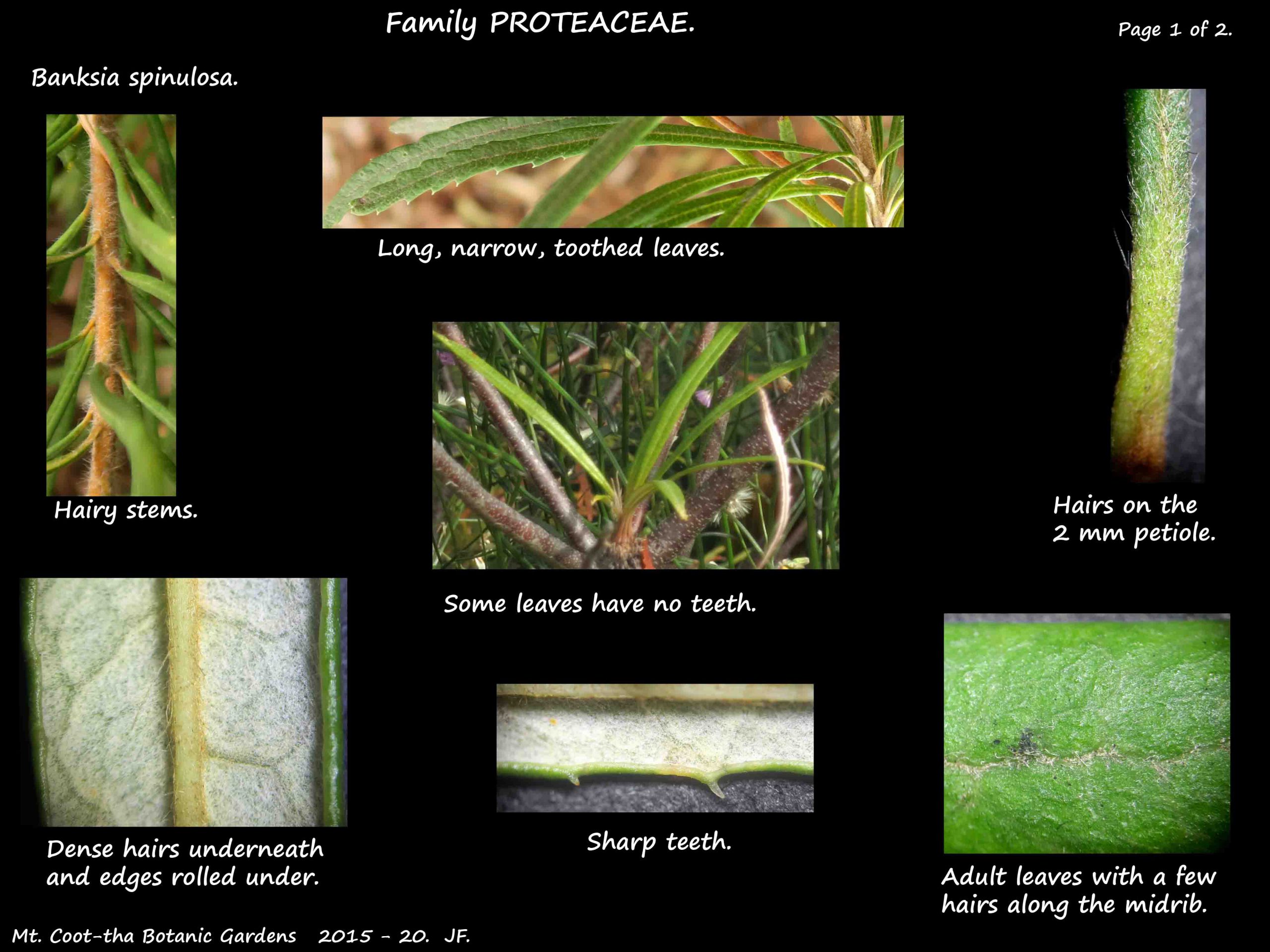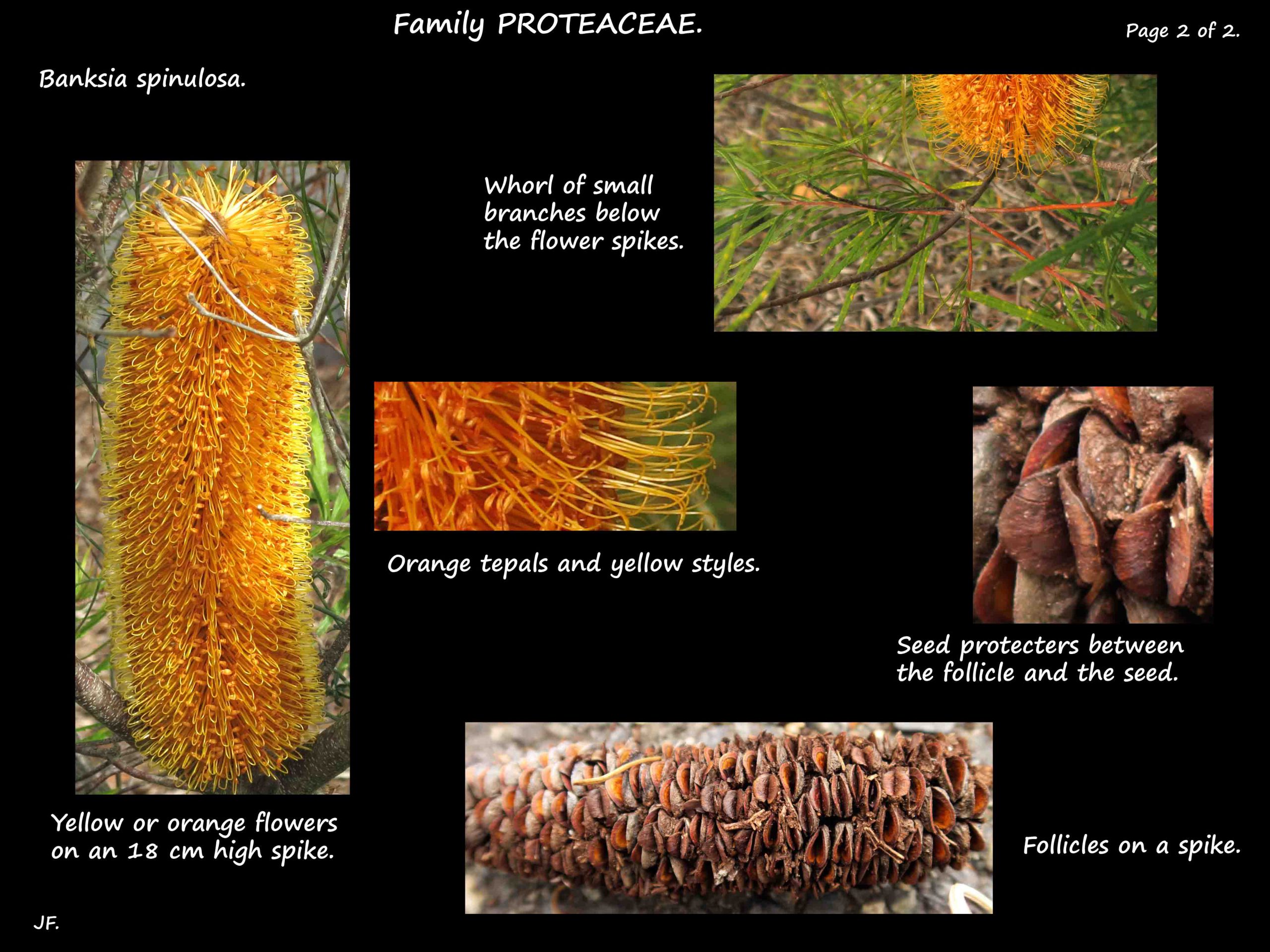Banksia spinulosa.
Family Proteaceae.
The Hairpin banksia, with 3 or 4 varieties, is found in Queensland.
Mostly seen as woody shrubs around 2 m high but they can grow to 6 m trees.
They may or may not have lignotubers.
Young branches are hairy and older grey or brown bark has lenticels (nodules).
Leaves, on petioles a few mms long, are in whorls.
The long, narrow blades are up to 12 cm long and up to 1 cm wide (young leaves are broader).
The tips are blunt with a small mucro.
The blade can be flat or the edges may roll under.
There are teeth towards the tip or along the whole margin.
Occasionally leaves have no teeth.
There are short white or pale brown hairs underneath.
Near terminal inflorescences are cylindrical spikes around 20 cm high and 8 cm wide.
They have a whorl of small branches underneath.
The hundreds or thousands of flowers in each are bright yellow to orange.
The 4 tepals are up to 3 cm long and initially fused into a tube.
The hairs, mainly externally, lie flat on the surface.
The 2 mm long anthers lie in the tepal tips.
The styles vary in colour being yellow, red, pink, orange, purple or black.
They are up to 4.5 cm long and have tips that are hooked, bending back on themselves.
The fruit are follicles with up to 100 on each spike.
Around 2 cm across they are initially hairy.
Banksia “Giant Candles” is a hybrid between B. ericifolia and B. spinulosa var. cunninghamii.
Shrubs up to 4.5 m high and 3.5 m wide with branches low down on the trunk.
The orange spikes can be up to around 40 cm high.
J.F.



